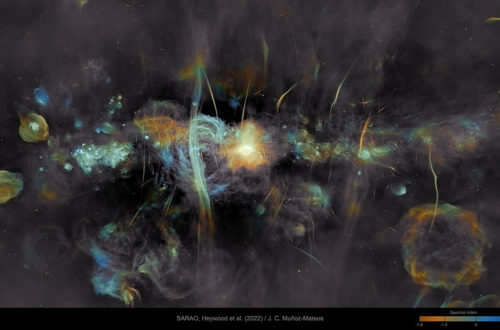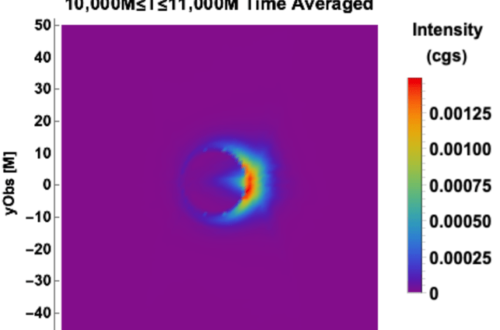For translations of this post in Xhosa, Xitsonga, Afrikaans and Arabic, see here!
If you have ever been lucky enough to be in a remote area, far away from the buzz of city life, then you might have looked up at the sky as the wonders of the Milky Way were revealed to you. Seeing the Milky Way with your own eyes is a truly magical experience. But what is the Milky Way and why does it look like a starry band of milk. Well, the Milky Way is the galaxy we live in. From our point of view, which is from Earth, when we look towards the centre of the galaxy, we see a collection of stars, gas and dust in the form of a band.
But what exactly is going on in the centre of our galaxy, and why has imaging it been such a challenge? If we want to take a closer look at the centre, we can observe the Milky Way with Neutral Hydrogen. In this image from the MeerKAT telescope, we can see that there’s a lot of structure, especially in the centre where we see a bright region. This bright region is home to Sagittarius A* (Sgr A*), the black hole at the centre of the Milky Way Galaxy.
Scientists noticed the existence of Sgr A* when they realised that the orbits of stars around that region are very chaotic.
To get a better sense of what Sgr A* looks like and the physics that govern it, we need to try and image it. But it is an extremely small object, equivalent to trying to resolve the shape of a doughnut on the surface of the Moon from Earth. For such a task, we would need an incredibly large telescope since the resolution of an image is inversely proportional to the diameter of the telescope. This is where the Event Horizon Telescope (EHT) comes in. EHT is a worldwide collaboration of radio telescopes that work together as one telescope. The diameter of EHT is almost equal to the diameter of the Earth, that is almost 13 000 km meaning that it has a very high resolution equivalent to resolving an orange on the moon!
EHT had previously imaged the black hole at the centre of the M87 galaxy
but on May 12th the EHT collaboration has an exciting announcement (see here). They have groundbreaking results for the Milky Way! Be sure to check their website for the live-streaming of the main event, as well as the European Southern Observatory’s YouTube channel on May 12th at 15:00 CEST for more information!




